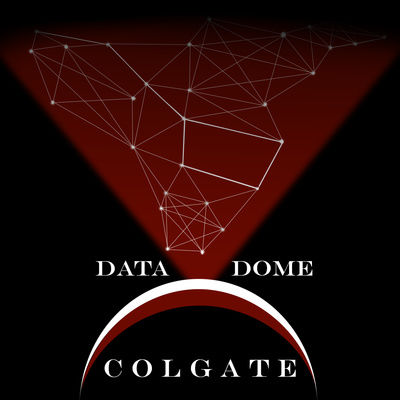Vis Lab Presents Data to Dome: A World Wide Affair

Data Dome
When people think of the Ho Tung Visualization Lab (Vis Lab), they automatically think of astronomy. Despite the abundance of astrophysics students that basically live there, this perception is mistaken. Behind the unnecessarily heavy doors of Ho 401 lies a new frontier in technology and an entirely different way to view the world.
From Friday, October 18 to Saturday, October 19, the Vis Lab hosted the 2019 Data to Dome conference. As the first of its kind to be hosted in the United States, this workshop was the result of a year-long collaboration among the International Planetarium Society, South Africa’s Department of Science and Innovation and National Research Foundation, Iziko Planetarium, the University Libraries and, of course, the Vis Lab. Over fifty delegates, including planetary professionals, faculty from multiple disciplines and visualization experts from six different countries attended.
Participants engaged in hands-on workshops to learn ways of taking research data and creating stunning visualizations for interactive use. These workshops included scanning objects to create 3D images, learning how to utilize drone imagery and reducing and modifying data sets into material for the dome.
Besides participating, Colgate students presented workshops. The Innovation Fellows, a student group of seniors Jacob Pilawa, Katie Weber, Jacqueline Stern, and junior Risako Yang presented an interactive workshop on problem solving in a professional setting. Sophomore Fairuz Ishraque presented a workshop on reducing data sets from the National Oceanic and Atmospheric Administration.
In addition to workshops, multiple types of visualizations were demonstrated. Assistant Professor of Geology Joe Levy, Assistant Professor of Antrhopolgy Santiag Juarez and Assistant Professor of Geography Mike Loranty showcased the interdisciplinary use of the dome: Loranty used imagery and research data from Siberia, Juarez presented a Mayan archaeological site alignment to the landscape and Levy layered his Antarctica to construct a flight-like experience for the audience to show high resolution glacier and ice features.
Flandrau Science Center and Planetarium’s Dayna Thomson and Adler Planetarium’s Mark Subba-Rao gave a presentation on the visualization of experimental cosmology, walking the audience through the “yellow brick road” of the universe’s evolution. Nandivada Rathnasree of the Nehru Planetarium gave a discussion on the accuracy of medieval astrolabes, showing how astrolabes work and how principles of them are still used today. Carter Emmart of AMNH & OpenSpace gave a talk on using an open-source program OpenSpace to visualize 3D data in the planetarium environment. Lucia Marchetti and T.H. Jarrett of the University of Cape Town presented their work in Galactic datasets in an interactive presentation at the Izikio Planetarium. The last presentation was by Alexander Sivitilli and Lucia Marchetti of the University of Cape Town, who demonstrated the applications of virtual reality in the dome.
The Data to Dome conference is crucial because when scientists collect data from their research, it does not look accessible, so the value of the research is obscured. In the workshops, participants were reminded that they are the communicators of such research data and were given strategies on how to make these discoveries or theoretical ideas accessible to a broader audience. For some data, creating a 3D visualization is the optimal way to understand it because one will be immersed in the data and feel as if they are part of it. The workshops also showed various ways in which data can be transferred to the dome and implemented in a way that is easier for the audience to wrap their head around. These data sets do not solely apply to astronomy or physics. The dome can be used for insights into the human body or to travel to different geographical locations around the world. Utilizing the dome also brings new opportunities for collaboration on research projects. Since the conference, the American Museum of Natural History, Nehru Planetarium in Mumbai, Pomona College and the University of Cape Town in South Africa have expressed great interest in partnering and sharing content on future projects.
The planetarium community continues to grow and evolve as new, more efficient technology develops and its network expands. Creating remarkable visualizations out of research data will continue to lessen the gap of communication.









